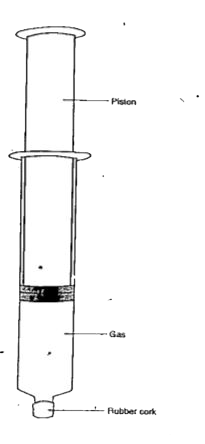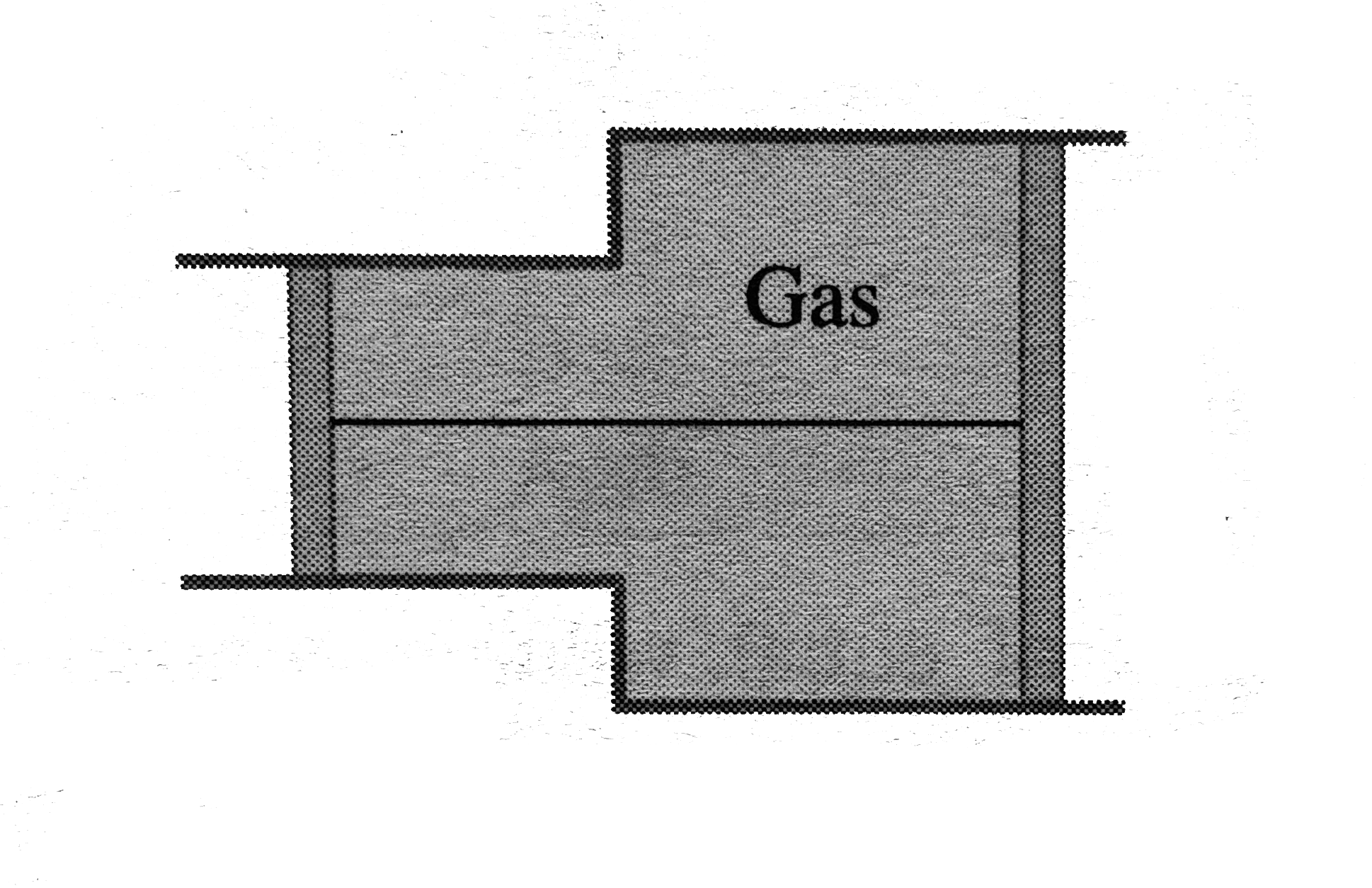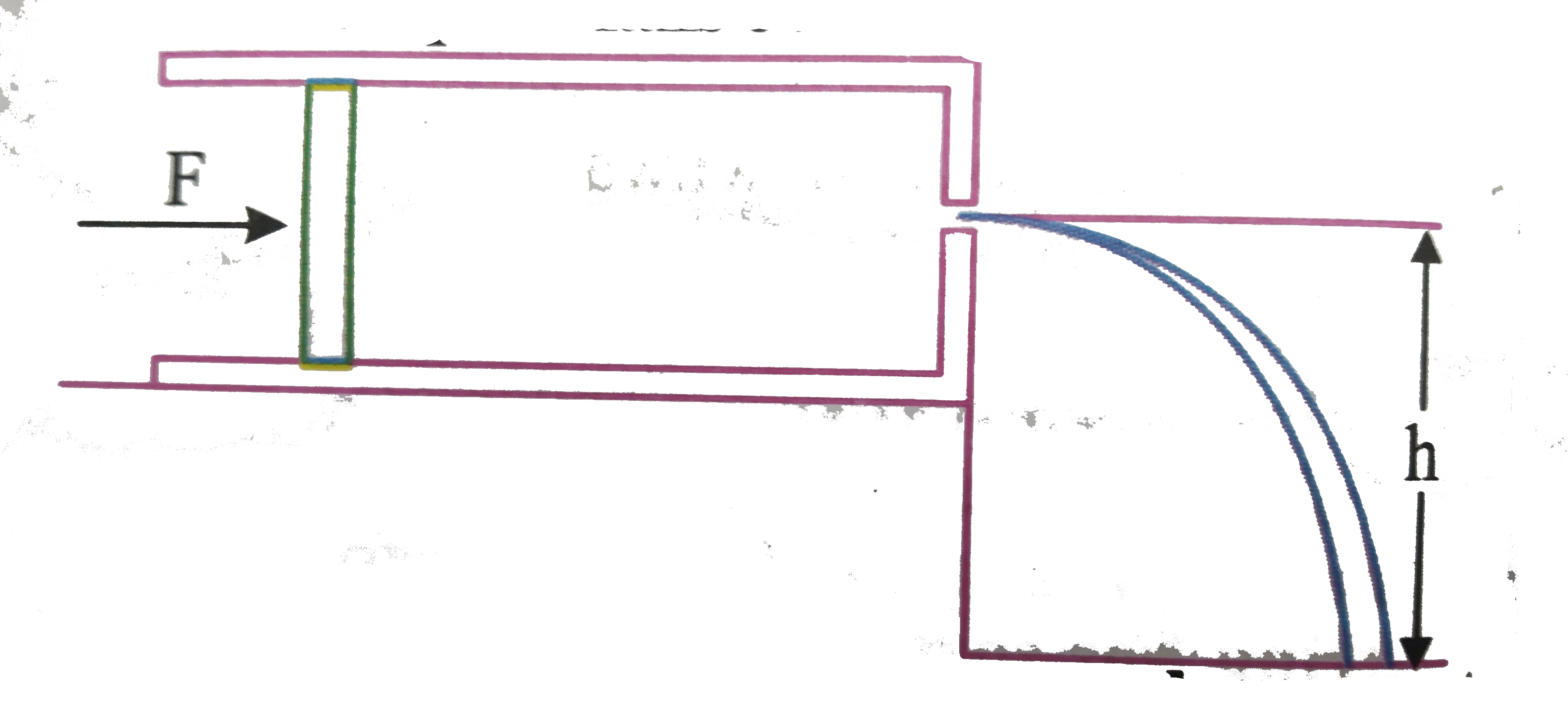Take three 100 mL syringes and close their nozzle by rubber corks as shown in Fig.
Remove the 'pistons from all the syringes
Leaving one syringe untouched, fill water in the second and pieces of chalk in the third.
Insert the pistons back into the syriages. You may apply some vaseline on the pistons before inserting them into the syringes for their smooth movement.
Now try to compress the content by pushing the piston in each syringe.

What do you. observe ? In which case the was easily pushed in ?
The piston was easily pushed in the syringe which was filled with air.
Topper's Solved these Questions
- MATTER IN OUR SURROUNDINGS BOOK - NAND LAL PUBLICATIONCHAPTER - MATTER IN OUR SURROUNDINGS EXERCISE - ACTIVITY 1.12
1 Videos
- MATTER IN OUR SURROUNDINGS BOOK - NAND LAL PUBLICATIONCHAPTER - MATTER IN OUR SURROUNDINGS EXERCISE - ACTIVITY 1.13
1 Videos
- MATTER IN OUR SURROUNDINGS BOOK - NAND LAL PUBLICATIONCHAPTER - MATTER IN OUR SURROUNDINGS EXERCISE - ACTIVITY 1.10
4 Videos
- ATOMS AND MOLECULES BOOK - NAND LAL PUBLICATIONCHAPTER - ATOMS AND MOLECULES EXERCISE - ADDITIONAL QUESTIONS (LONG ANSWER TYPE QUESTIONS)
1 Videos
- STRUCTURE OF THE ATOM BOOK - NAND LAL PUBLICATIONCHAPTER - STRUCTURE OF THE ATOM EXERCISE - ADDITIONAL QUESTIONS (LONG ANSWER TYPE QUESTIONS )
1 Videos
Similar Questions
Knowledge Check
A gas is filled in the cylinder shown in fig. The two pistons are joined by a string. If the gas is heated, the right piston will
 Amove toward leftBmove toward rightCremain stationaryDnone of these
Amove toward leftBmove toward rightCremain stationaryDnone of these
An ideal liquid of density ρ is filled in a horizontally fixed syringe fitted with a piston. There is no friction between the piston and the inner surface of the syringe. Cross-sectional area of the syringe is A. At one end of the syringe, an orifice is made. When the piston is pushed into the syringe, the liquid comes out of the orifice and then following a parabolic path falls on the ground.
With what velocity the liquid strikes the ground?A√F+ρghAρAB√F+2ρghAρAC√2F+ρghAρAD√2(F+ρghA)ρA
The polymer used for making injection syringe.
View Solution_E01_216_Q01.png)
A syringe containing water is held horizontally with its nozzle at a height h above the ground as shown in fig the cross sectional areas of the piston and the nozzle are A and a respectively the piston is pushed with a constant speed v. Find the horizontal range R of the stream of water on the ground.
View Solution_E01_216_Q01.png)
A syringe containing water is held horizontally with its nozzle at a height h above the ground as shown in fig the cross sectional areas of the piston and the nozzle are A and a respectively the piston is pushed with a constant speed v. Find the horizontal range R of the stream of water on the ground.
View SolutionHow does a syringe work?
View SolutionWhen the piston of common water pump is raised its piston valve opens.
View SolutionWhy does the liquid rise in a syringe when its piston is pulled up?
View Solution
